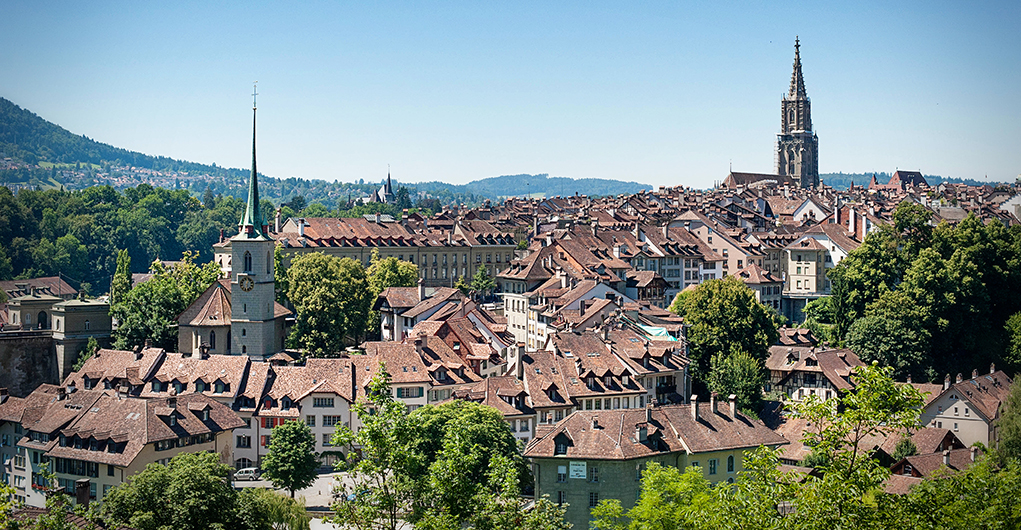I have been following professional cycling and Le Tour de France almost religiously since the early 90’s. The days when Lance Armstrong and the US Postal Service team were still hero’s and hadn’t yet been busted for one of the most sophisticated doping scandals in sport, that is until the Russian Olympic Team asked someone to hold their beer.
When we started planning our trip to Switzerland, I was laying in bed one night and the mental lightbulb went on! OMG, I will be in Europe during the tour! I immediately rushed to the official race website to check their map of the various stage start and finish locations as they occasionally dip outside the French border, and low and behold, a couple stages of the tour were being held in Switzerland that year.
For anyone who doesn’t follow this sporting event, I will give you a brief rundown, so the rest of this blog makes sense (hopefully)!
Le Tour de France, as it is properly called in France, is considered the most prestigious cycling event in the world. It was started in 1903 and has been held annually every year since; with the exception of a handful of years while World War I and World War II played out.
The race is made up of roughly 20 or so teams, with 8 riders per team, and takes place over 23 consecutive days in July. There are 21 stages (individual daily races) and 2 rest days, usually about a week apart. Each riders time is recorded every stage then added up for a total time at the end. Whoever has the combined lowest time at the end is the winner.
Sounds fairly simple, right? Well, it’s not.
The non-Time Trial specific stages, where all riders in the event are out on the road at the same time, can range in distance from 75 miles to 150 miles long per stage. The terrain and elevation of each stage can range from flat as a pancake to mountains so high and steep, trees have decided the upper areas are uninhabitable. We also have the occasional added fun of an entire stage ridden on insanely old cobble stone roads, as the organizers ever so thoughtfully included that particular year.
Then there are two Time Trial Stages, which are both very short distance wise, but are a risky all-out sprint for the entire distance. One is a Team Time Trial, usually held early on in the competition, where all 8 riders from a team start together and do their best to finish as close together as possible. Only the times from the first 4 of 8 riders to finish are used to score the team time trial, but the entire group must stay as close together as possible, as you never know when someone will have a flat tire or crash taking them out of the competition. Both very easy possibilities when riders are going all out over rough roads and sharp turns.
The other Time Trial stage is the Individual Time Trial. This is the same concept as the Team Time Trial, but riders start one at a time, spaced roughly one to two minutes apart. The rider in overall last place goes first and the rider in overall first place goes last. It is quite common for faster riders to pass slower riders who started minutes ahead of them.
Similarly, to running, each rider also has their own specialty. Some are sprinters, some are good at distance, mountains and even yes, those crazy cobble stone roads.
To make things even more interesting, as if that’s even necessary, organizers have enacted time limits each day, again similar to a foot road race saying you must maintain a specific pace, or you will be asked to leave the course. The end riders must finish within a specified percentage of the stage winners time each day or they are eliminated from the competition. This isn’t a hard task on the nice easy flat stages. The mountain stages are a whole other ball game though. Most sprinters are larger in stature and therefore have more weight to drag up over the steep mountains, making them much slower then the distance and mountain specialists leading the way. Last year’s tour may have set a new record for the highest number of sprinters missing the time cut off and being sent home! Not a big deal until you get back to the flat stages and your team doesn’t have any sprinters left to win you points at the finish.
Speaking of sprint and mountain stages, there is also a points competition with various check points along the course, where points are awarded to the first 5 riders through a sprint check point or the first 5 riders up and over the peak of a mountain climb. The overall winners of these points competitions get the honor of wearing a special jersey to signify their status to the other riders. The sprinter with the most points wears the Maillot Vert or Green Jersey and the mountain climber with the most points wears the Maillot à pois rouges or Red Polka Dot Jersey. The overall time winner after each stage gets to wear the coveted Maillot Jaune or Yellow Jersey and the best young rider under the age of 25 gets to wear the Maillot blanc or White Jersey. A fifth award is given out daily to the most aggressive rider from the day’s stage, but they only get a red bib number instead of a fancy jersey.
Aside from the obvious bragging rights of riding an insane 2,200 miles over the course of 23 days, there is also a lot of money involved with this sport. The overall winner at the end takes home roughly $560,000 with prize amounts shrinking drastically as the finishing spots descend.
As you can imagine it is not a cheap feat to outfit 8 professional riders with top of the line bikes, gear, multiple sets of back up bikes and gear, personal chefs, chiropractors, massage therapists etc. that all travel with the team, team managers and other staff, high tech custom buses, hotel rooms and food. Lots and lots of food! Some of the top tier teams have budgets in the $30-40 million US dollar range, so there is a lot at stake for riders to do well and win these high-profile events.
Many riders, though I still like to hope not ALL riders, have resorted to using performance enhancing drugs, despite them being strictly forbidden in any competition. Even if you don’t follow cycling, chances are pretty good you at least have heard something about Lance Armstrong and the decline of the US Postal Team due to their extensive and sophisticated doping scandal.
If you look at what these riders are being asked to do athletically day after day for 23 days straight, this should come as no surprise that some riders have resorted to cheating. The distances alone are enough to have any average cyclist begging for their death, but then you add in the mountain stages and its pure torture. I would assume anyway. My longest bike ride to date is a whopping 30 miles, included an hour stop for lunch in the middle, and our biggest elevation climb was maybe 20 feet up a ramp.
Each mountain peak is ranked by difficulty starting with Category 4 (the shortest), working to Category 1 (the 2ndtallest) and HC or Hors Category in French, which in English stands for Good Luck. Okay not really. It stands for “Beyond Category”, but these climbs are so hard that when the categories were created, cars were not expected to make it up them. How ridiculous is that? I will stick with my 20-foot ramps thank you very much!
Most mountain stages will have a mixture of category climbs within a single stage, and some stages will finish at the top of a beyond category climb, forcing riders to expend insane amounts of energy. In an average stage, riders will burn around 4,000-6,000 calories and 7,000 or more on a mountain stage. Think that out for a second. The recommended caloric intake for a non-athletic adult male is around 2,000 per day to maintain a current body weight. Less if they are trying to lose weight. Can you imagine burning 3 times that in a span of a couple of hours? I am getting hangry just thinking about it.
Between the money at stake and the overall exhaustion level, hopefully it is a bit clearer why so many riders sadly resort to doping.
This being a travel blog and not a finger pointy, you did something bad blog, that is about all I will say on the doping issue. I will however suggest you check out two amazing movies on this topic if you wish to learn more.
The first is called The Program. This is a biographical drama on Lance Armstrong, and how an Irish journalist reporting on the tour exposed his banned substance use, and ultimately had his 7 consecutive Tour de France titles revoked.
The other is called ICARUS, a documentary that started out just trying to replicate the doping process and show how easy it is to get away with in sports. Instead, it accidentally uncovered what has become the largest and most sophisticated doping scandal in sports history by the Russian Olympic team, leading to numerous Olympic medals being stripped and their country from being banned from future Olympic competition until they can prove without a doubt their athletes are competing clean.

Enough about the rules of the tour though and back to my actually getting to see a stage of one live and in person! As mentioned previously, a couple stages of the tour were being held in Switzerland. The route of the tour changes every single year and will almost always scoot into a bordering country for a stage or two. One year they even started in England!
My luck could not have been better! A stage would be finishing in Bern, Switzerland, stay for a rest day, then leave Bern the next day, all while we were also in Switzerland! If you read the prior two blogs, you will already know that we were staying just outside of Zurich and making day trips to other areas during our week there.
Bern is roughly an hour drive from Zurich so taking a day trip was totally possible. We just needed to wait until we were there and see how the week played out to know if we could swing this or not. One of Sven’s friends Marc just happened to rent a caravan and was following along to each stage of the tour for a week or two while on his summer break. Sven reached out to him a couple of days prior and got the scoop on where we needed to go and whether it was worth the drive over or not.
Remember how I said stages are roughly 75-150 miles long, well as you can guess, that is not done by making a zillion loops through town, like we are used to with Criterium cycling races here in the United States. Riders start in one city and ride to another city in a completely different area.
This means if we go out somewhere on the course, especially a flat stage, you will spend an entire day (or more) camping out, waiting, waiting, waiting, oh look the rid….(insert whiplash), poof they are gone, and now you are stuck waiting, waiting, waiting to exit this area you have camped out at all day, only to see them whiz by in a matter of 30 seconds. I think you can agree that this is not a good use of anyone’s time, especially while on vacation.
Now mountain stages, thanks to the high elevations and slower climbers, will give you significantly more face time with the riders as they go by. You could see riders for an hour or more in one single location because the pack ends up so spread out. But guess what, in order to get to these prestigious mountain stage locations, you literally need a camper (with facilities), as you will be camped out on this mountain for days to a week before the actual race day to get a good spot and to get parked before the roads are closed off. You may also be stuck there a day or so after, because realistically there is nothing else to do while waiting on the side of a mountain for days but eat and drink. And by drink, I mean a LOT. Seriously have you ever watched the mountain stage of a Tour de France? Those spectators are living their best life. It is one giant party for days, and no one is in a rush to leave after the riders pass through, so good luck getting your camper off the grass and back onto the road.
Since neither of the above seemed like good options for us, we chose to go see the start of the stage leaving Bern. We left the hotel fairly early again, as we needed to get to the city center and parked before the roads were all closed off. Marc gave us the location of his camper van, so we drove there and met up with him. Following along from stage to stage in campers is quite popular with fans, as you get to see multiple races and can occasionally bump into the cyclists around town on the rest days allowing you to chat and get autographs or photos, assuming they are up for it. Most riders, especially towards the end of the tour are beyond exhausted or are focusing for a hard stage the next day and may not be as open to chatting with fans, so keep that in mind if you find yourself strolling around the same town as the tour on a rest day.
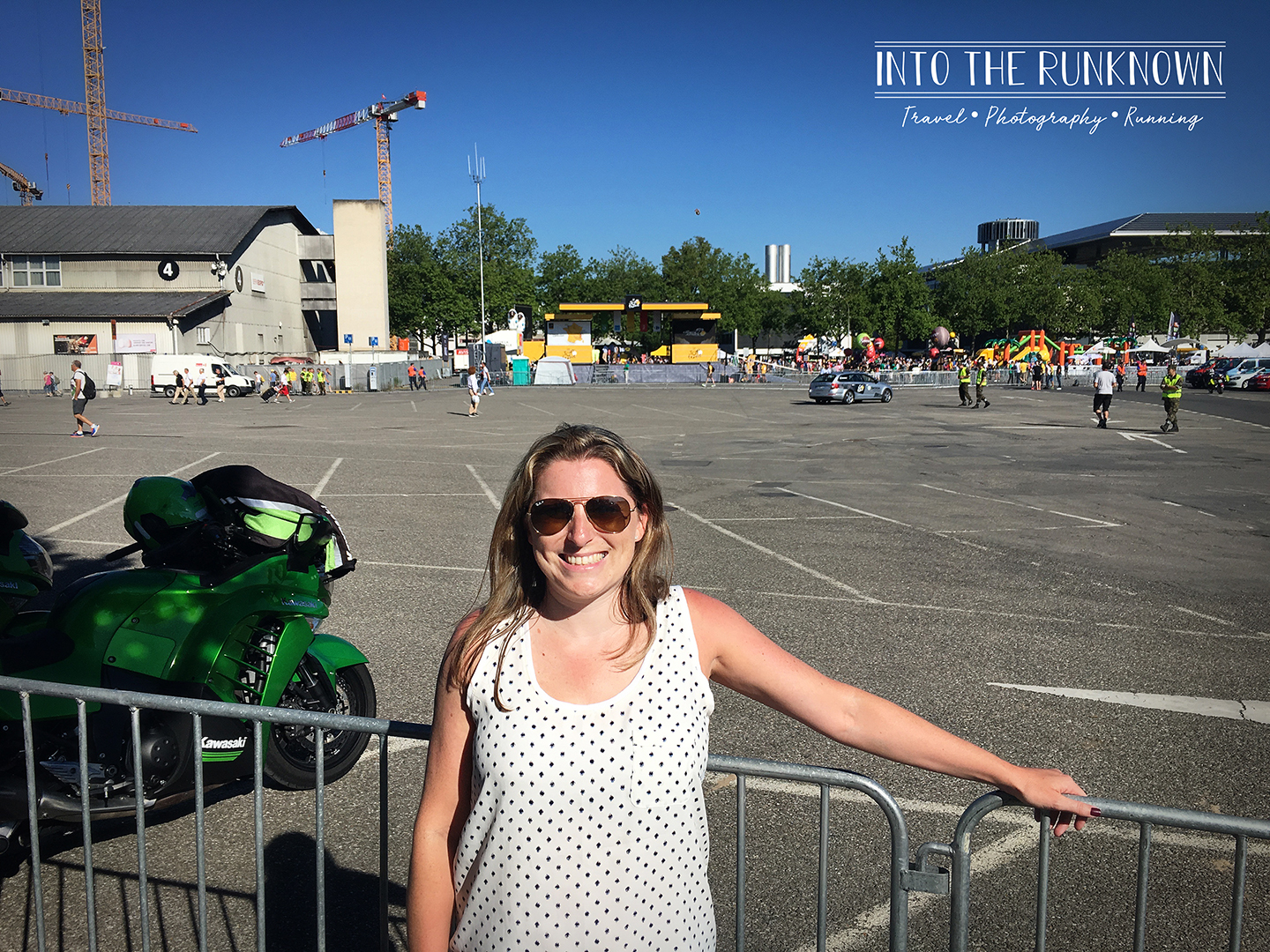
After hanging out for a bit near the camper, we decided to walk over and check out the village at the start area. The villages are setup like any big event, food vendors, gear vendors and a souvenir tent. The main attraction however was the large stage where riders had to go to sign in pre-race and team managers went to collect cases of water or energy bars to stock their cars for the trip.
Each team has multiple aid cars that travel from start to finish along with the riders, carrying team managers, team mechanics, extra bikes and wheels, water and snacks for the riders and occasionally a team photographer who gets the lucky job of snapping photos behind the scenes and during the race.
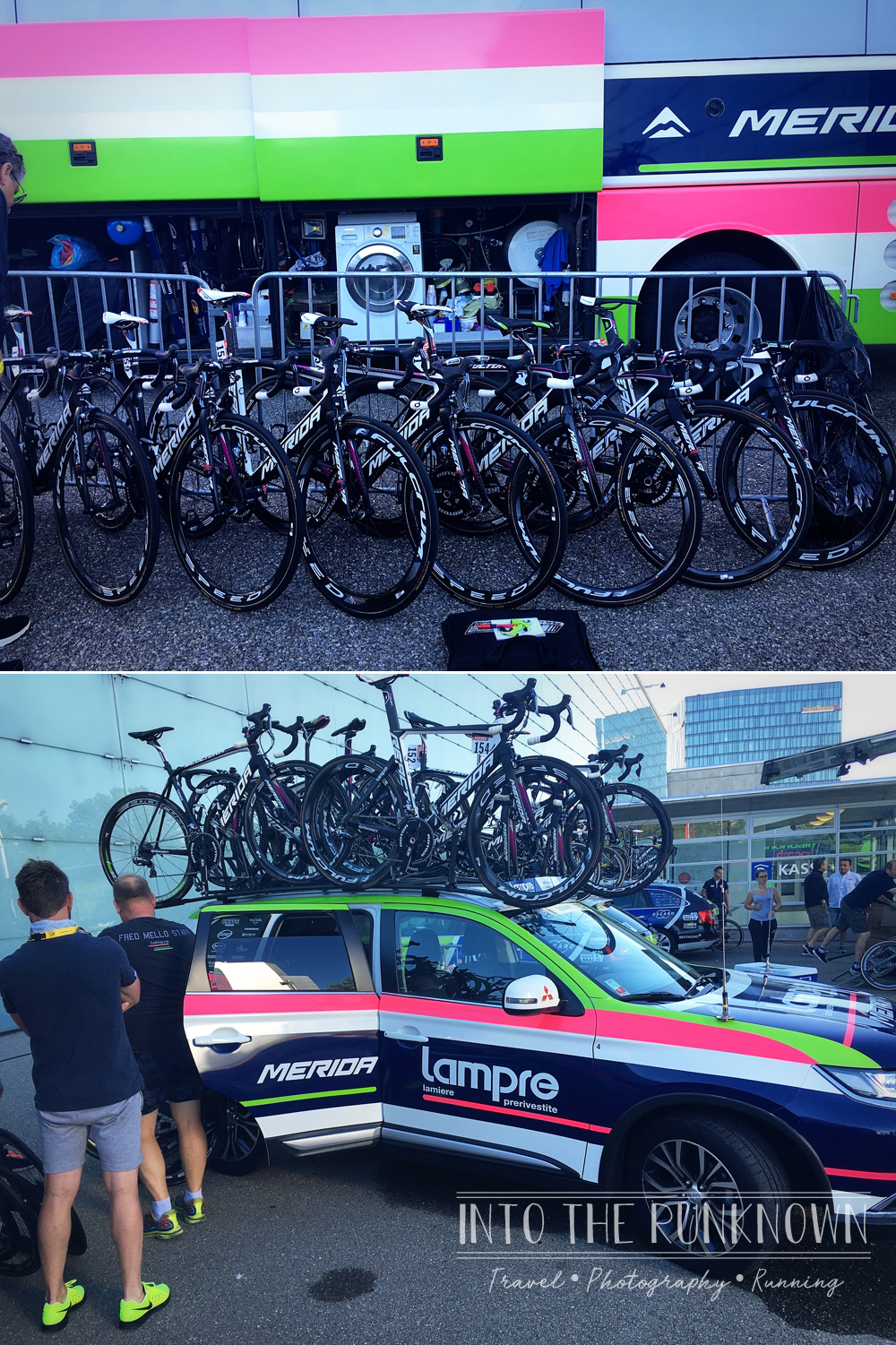
We did a quick loop to check things out, than headed down along the roadway to catch the caravan of sponsor floats that roll through the route ahead of the race, throwing out bucket’s worth of souvenirs to fans. Thankfully the first float smartly tossed down tote bags, as the amount of items that followed would never fit in anyone’s pockets.

After collecting a mound of goodies, we ventured back to the stage to watch the riders be announced one by one, as they rode up across the stage and signed their name to officially check in. If a rider does not complete this pre-race step, they are considered disqualified from the remainder of the race.
I handed off my phone to Sven who captured a bunch of videos and photos of riders while I snapped away with my Nikon camera. The stage that day was a mountain stage, and it was fairly far along being the last week of racing, so any serious contenders to the race were quick to get in and out of the area, so they could make their way back to the team bus to focus and prepare for the hard stage ahead. The sprinters however, knowing they had no chance at being competitive that day, were happy to ride over to the fans and sign autographs and take selfies.
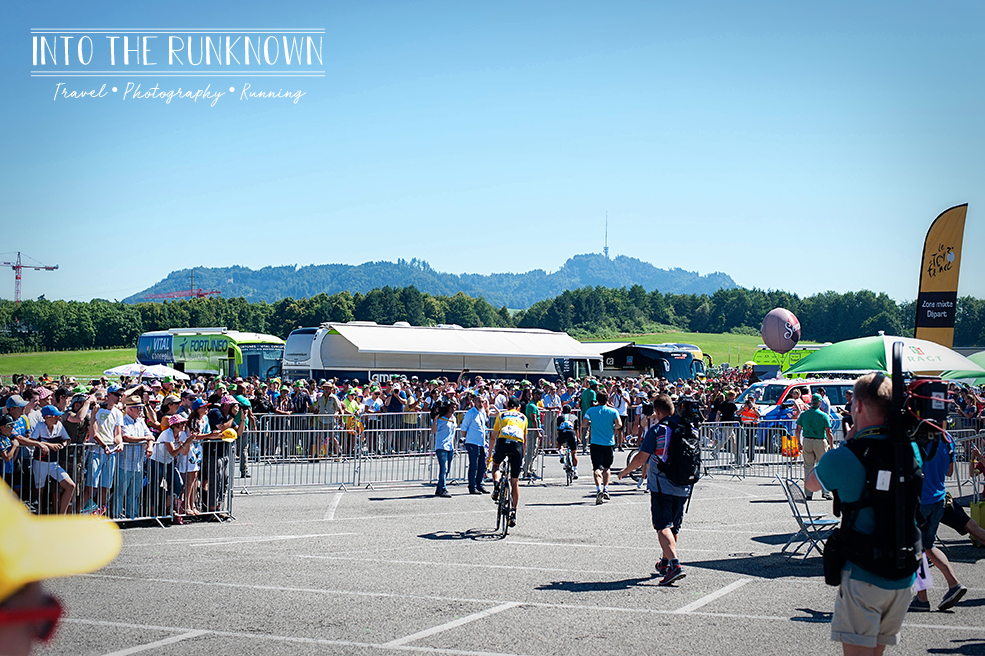
We had crammed ourselves pretty far up in the crowd, but sadly were just a little too far back for either of these things, so I had to settle with some close-up photos of just the riders instead.

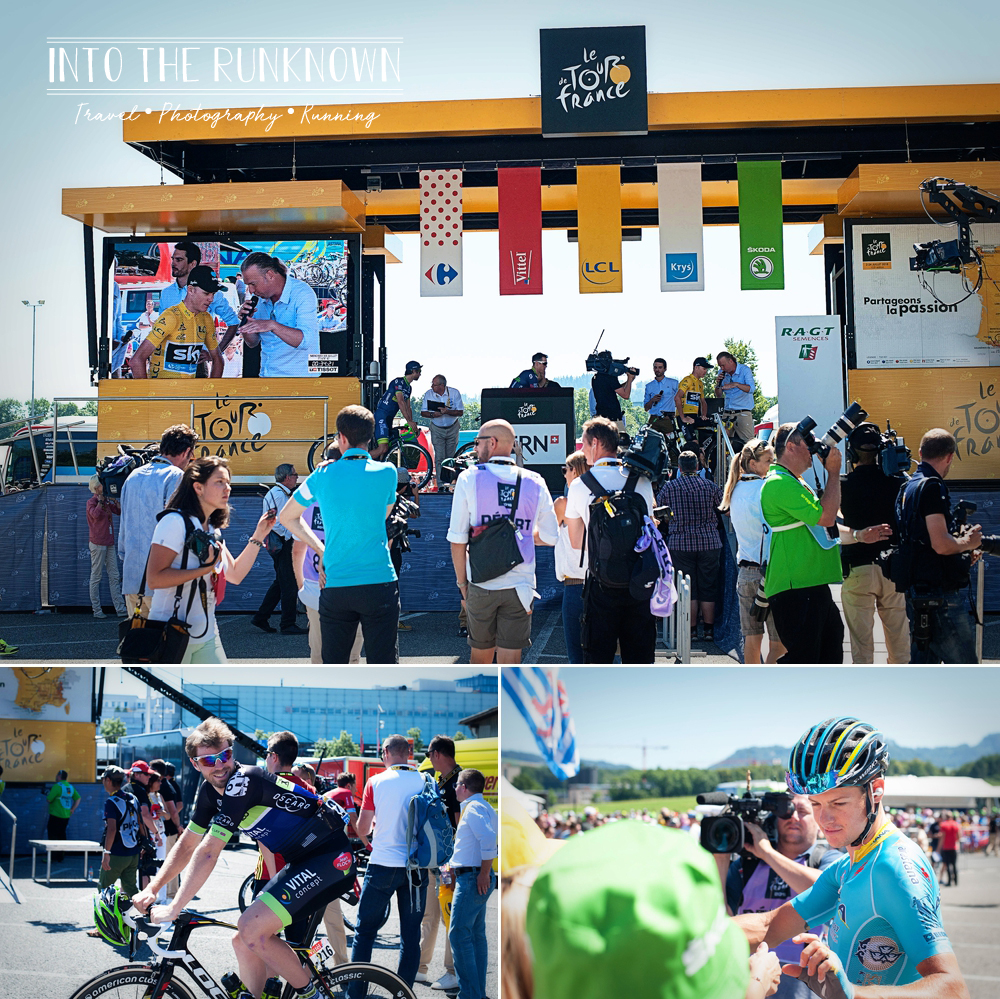
Being the middle of July, the sun and heat were absolutely brutal that day, and there was no cover over top of us to provide shade. My sunburn from a few days’ prior was not doing well, and I was starting to creep towards heat exhaustion. With a good 45 minutes or more of rider check in’s left to go, I had decided I had enough, and needed to retreat towards some shade and like a gallon of water.
The guys were okay to follow, and we made our way out of the crowd and back to the sidewalk where some trees were keeping things a bit cooler. I plopped myself down on the ground and waited until the team cars and riders lined up for the unofficial start of the race.
I say unofficial, because the start within city limits is really just a parade for fans. The riders with the special leader jerseys are all lined up in the front of the pack for the cameras and the atmosphere is still relaxing and fun.
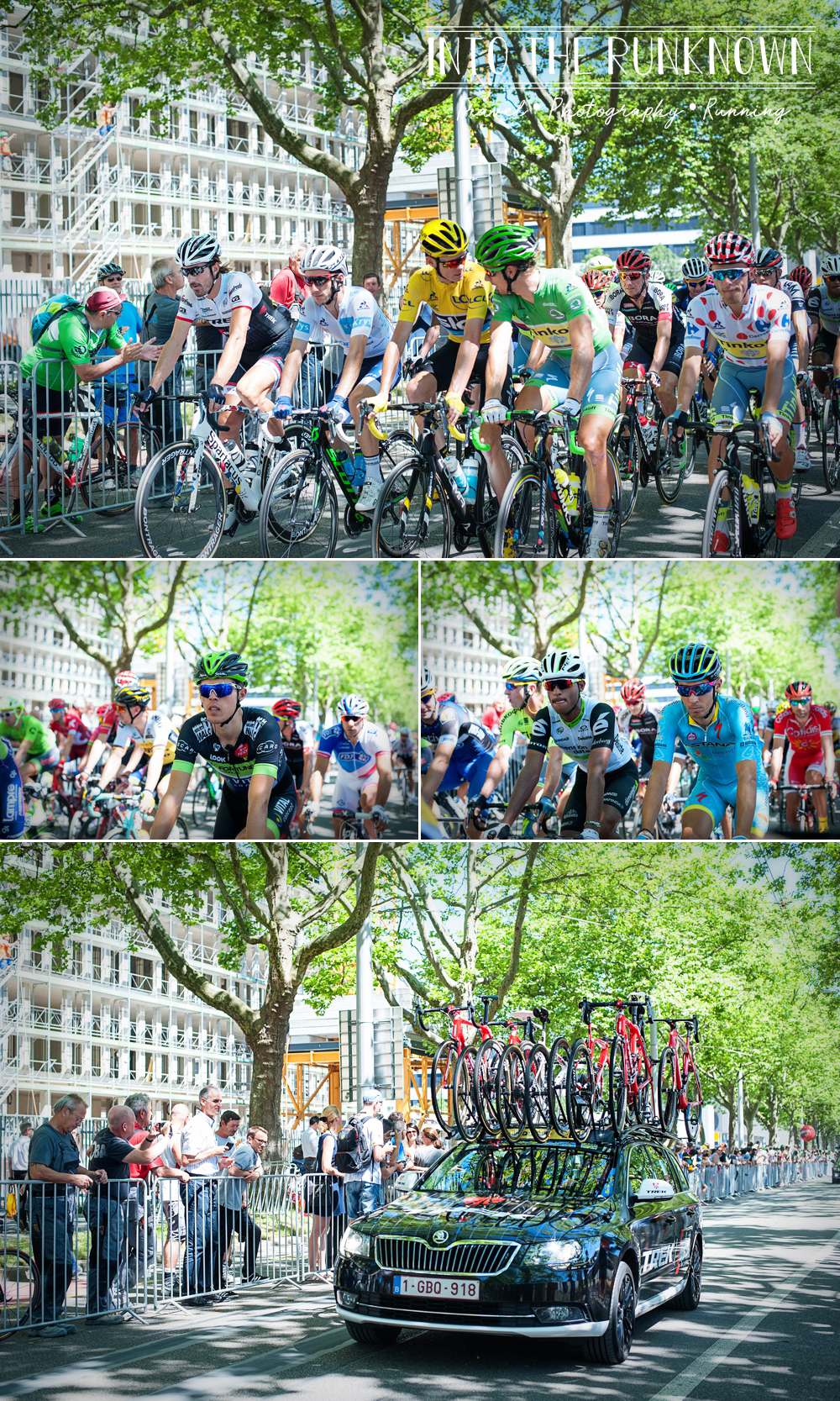
The real start usually occurs miles out side the city once they are on open safe roads. There is a red director car that rolls along in front of the riders, with the race director hanging out the sunroof holding a flag. As soon as they determine that it is safe and all riders are in contact with the pack, the director will give the official command to start and the car will zoom ahead to get out of the way. This is the part you will occasionally see on television, but usually only if something out of the norm happens that the announcers want to show you. Otherwise, it’s a fairly boring part of the race.
Just like that though, we waited hours in the blistering sun for the riders to zoom past in a matter of minutes, and our official Tour de France experience was over! It was totally worth it though to experience something first hand that I watch on TV every summer!
If you are on instagram check out @kramon_velophoto, @paulineballet, @ashleygruber and @jeredgruber or hashtags #tourdefrance #tourdefrance2019 to follow along with this years tour, which conveniently started this weekend!
Once the crowds cleared out, we made our way back to the car, mainly to grab me more sunscreen, and some Advil for my now pounding headache from the heat then took a stroll into the old city center to do some sightseeing.
Our first stop was at an overlook with an amazing view of the emerald green river and red roofed buildings below, that we found along Aargauerstalden near Rosengarten Bern, a public park. It’s definitely worth the short walk across the Nydeggbrücke bridge and to the left up the hill, if you started your journey down in the Old City area.
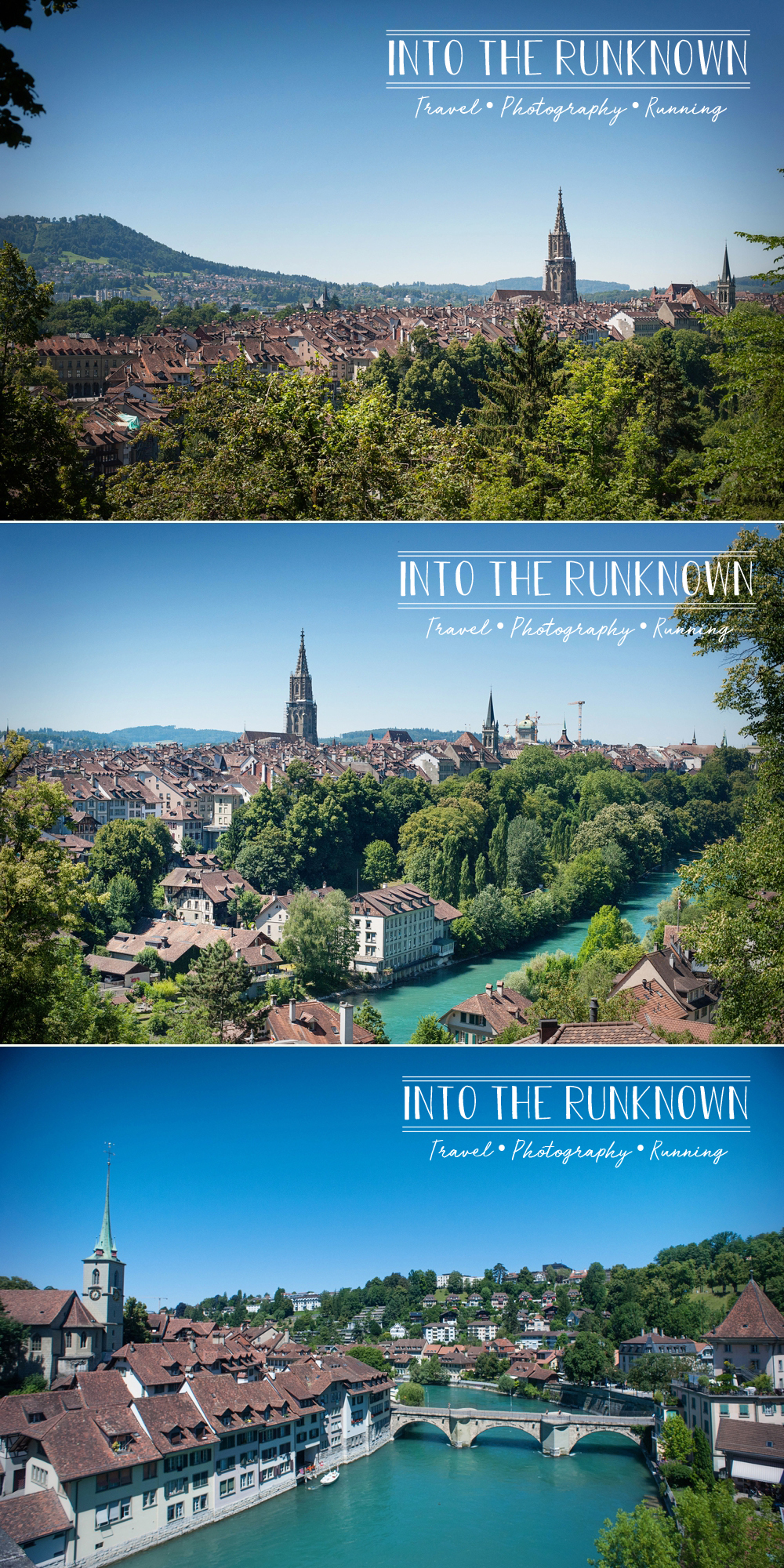
We of course were headed into town though from out near the expo center, so we made our way along the bridge, stopping for a lengthy period of time to take photos of the turquoise Aare River and deep red tiled roofs that look like they came straight from a fairytale.
From the bridge, we strolled down the center of town along Gerechtigkeitgasse admiring the arcades that line the street. If you aren’t familiar with an arcade, and no, not the place you play skee-ball down the shore, they are an architectural design used years ago on the side of buildings. They consist of a long-covered walkway where the shop entrances are and have large arched openings back out to the street. Not only are they pretty to look at, they are functional providing cover from rain or hot sun, something we desperately needed that day. We of course found the Gelato shop and took a seat on the steps with the rest of the crowds to relax for a bit. If Gelato isn’t your thing (gasp!) there are plenty of other cafes, bars and boutiques for you to check out along this street.
Being an old medieval city built in 1191, and preserved as such by becoming a UNSECO World Heritage site, Bern has some jaw droppingly beautiful architecture and cobble stone streets a plenty. It’s like going back in time! I honestly wish I had more photos of the buildings to share, but apparently my photo skills go WAY downhill when I am trying not to black out of dehydration.
The roads seem to change names every block or so in this area, but if you keep following the main road in the center that runs parallel to the river, you will eventually come to Zytglogge, a 13thcentury clock tower. The top large clock on the tower simply tells time, while the bottom clock is an astronomical clock, which shows the position of the sun, the moon, as well as zodiac constellations and the date. Try to time your visit to this a few minutes before the top of the hour, so you can see the clock animations come to life when the minute hand hits 12.
Tours of the inside can be booked for roughly $20.00 per person but needs to be booked in advance.
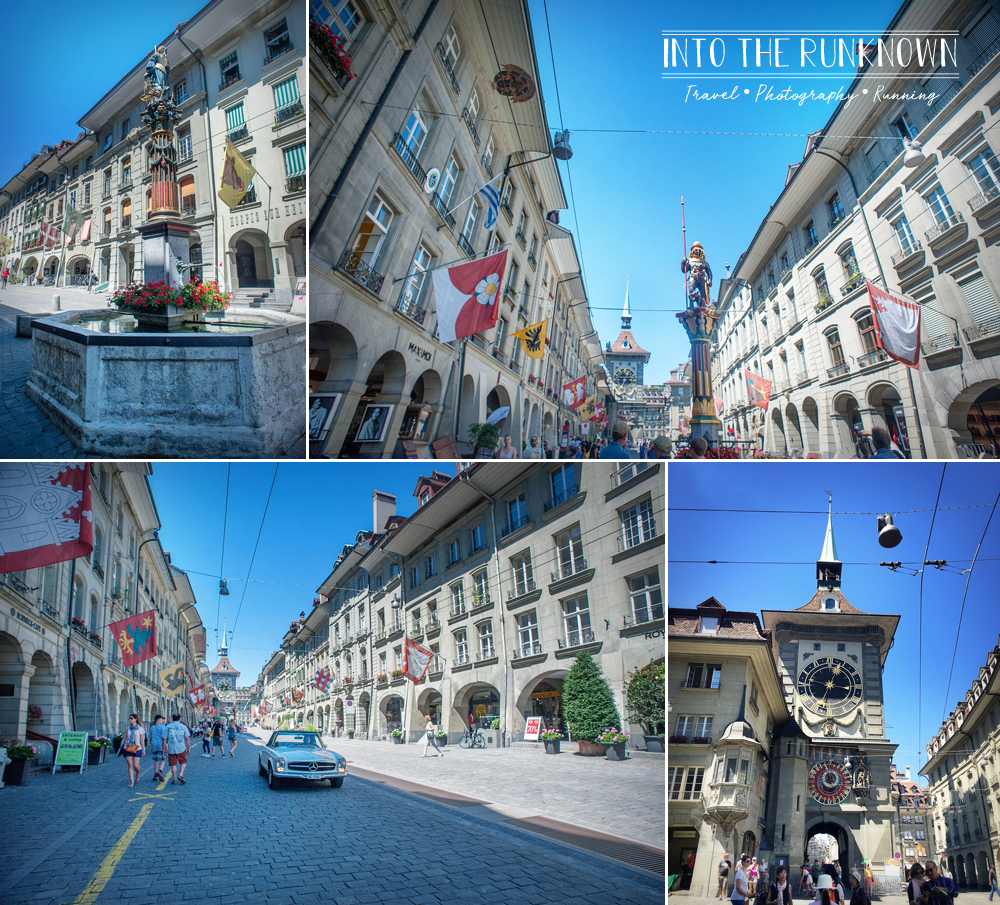
Next, we made our way over to Bundesplatz and Wasserspiel, an big open square where the Parliament building resides, and more importantly a water park, where fountains of water shoot up from holes in the concrete. The waterpark consists of 26 individual fountains, each representing one of the cantons (states) in Switzerland. If you are there in summer and need a place to cool off that doesn’t involve a swim in the river, be sure to check this out.
During the warm months this area is also home to the Berner Wochenmarkt, an open-air market with vendors selling fruits, vegetables, plants, cheeses and other wares. Definitely worth a stroll past if you are looking for some fresh local goodies!
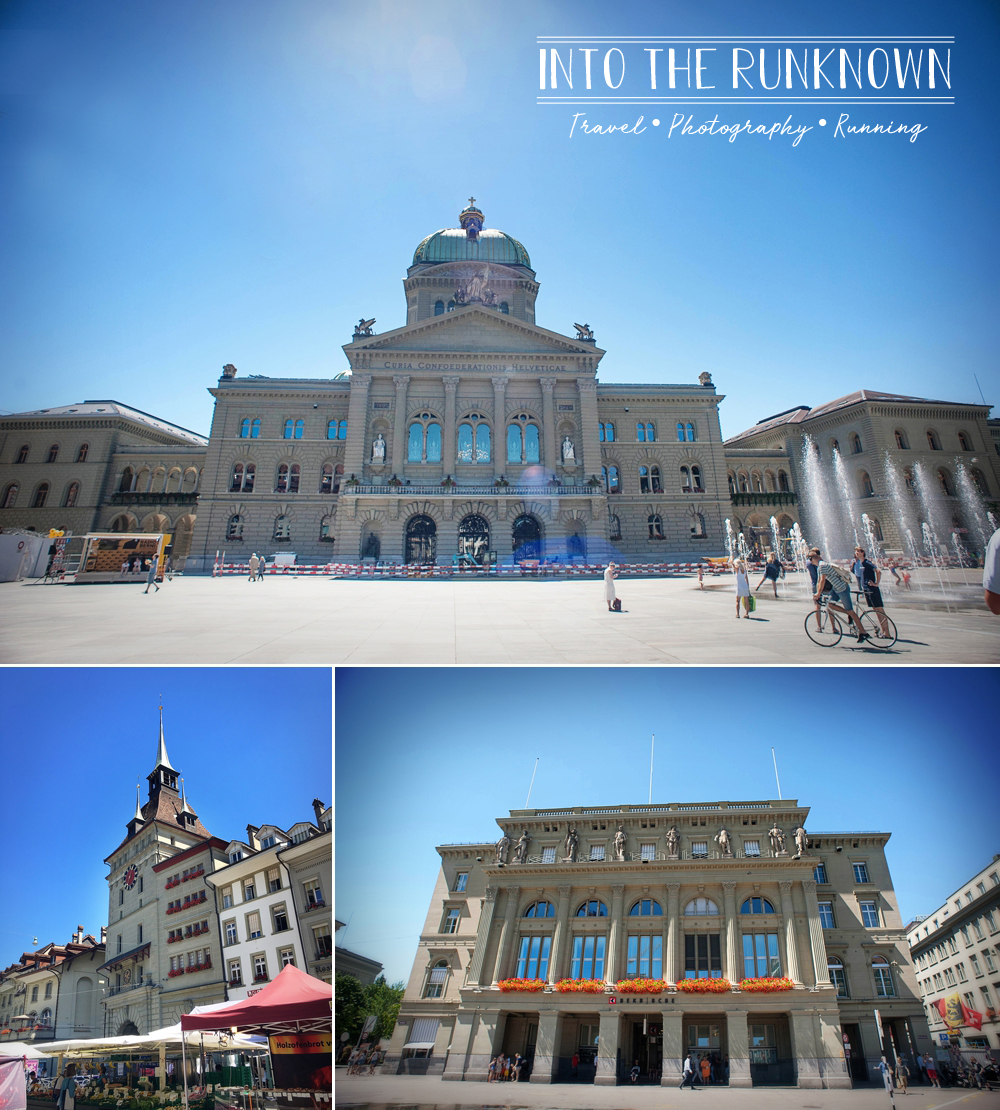
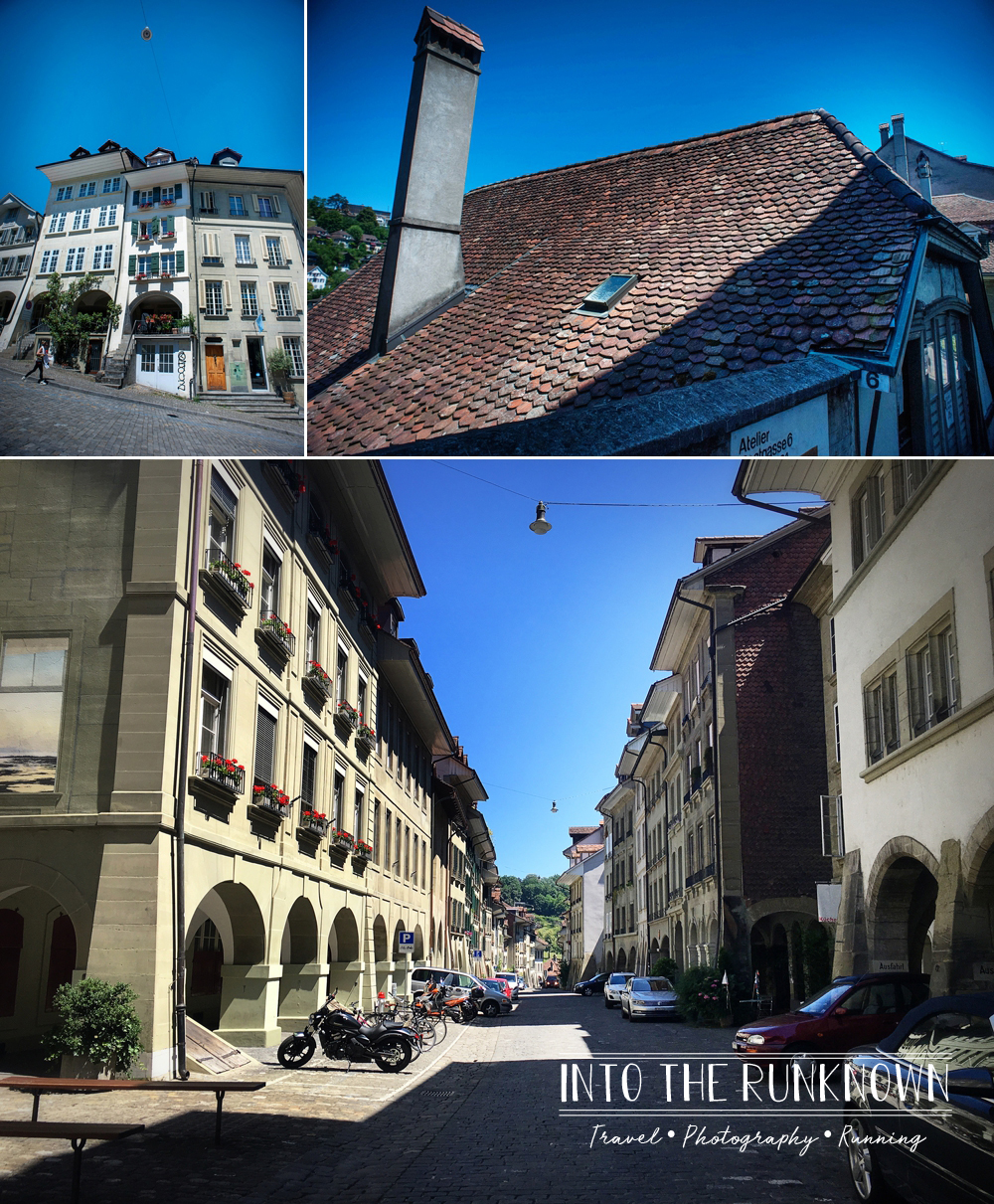
We spent the next hour or so just strolling around the small side streets taking in the views, but eventually we had enough of the heat and headed back to Zürich, to meet up with the rest of the group for another swim in the lake!
Since our main intention that day was to see the Tour de France, the Old City of Bern was just a bonus. There is so much to explore in the area, that a second trip will be needed soon!
If you are planning your own trip to Bern, they have a wonderful tourism site which can be found here.
As for us, this was our last day in Switzerland. The next day we headed home to Germany, via a very out of the way stop at Schloss Neuschwanstein, the large castle in the Bavarian Forest that Disney World modeled Cinderella’s castle after. Sadly no blog post on this, as we were only able to tour the outside, so I will post a few photos below. It was definitely a fun stop with some amazing scenery, but just like Disney, it was very touristy and not necessarily worth a trip hours out of the way to see again.
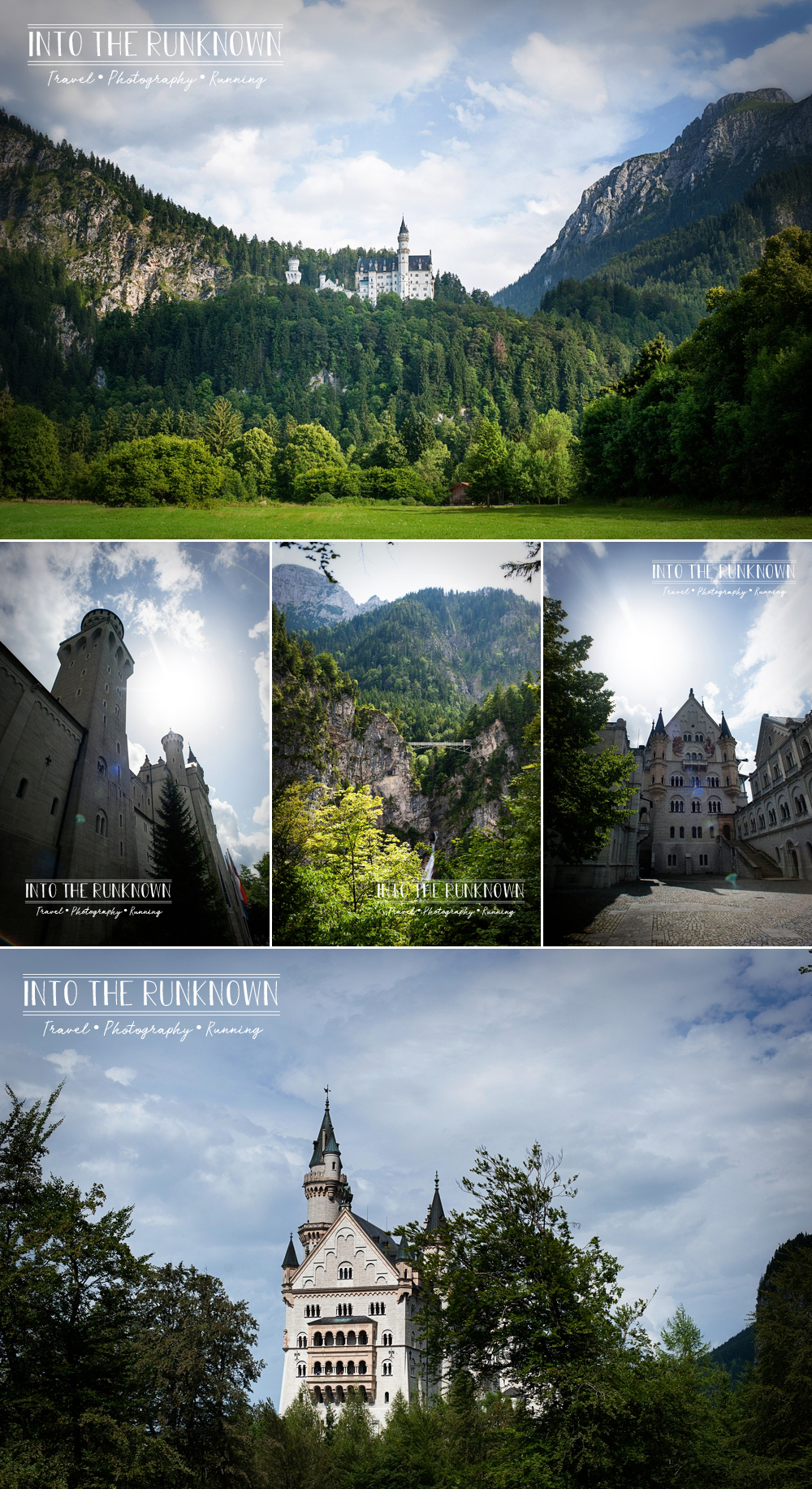

Stay tuned for more adventures, as I do my best to catch up on the backlog of recent trips!
